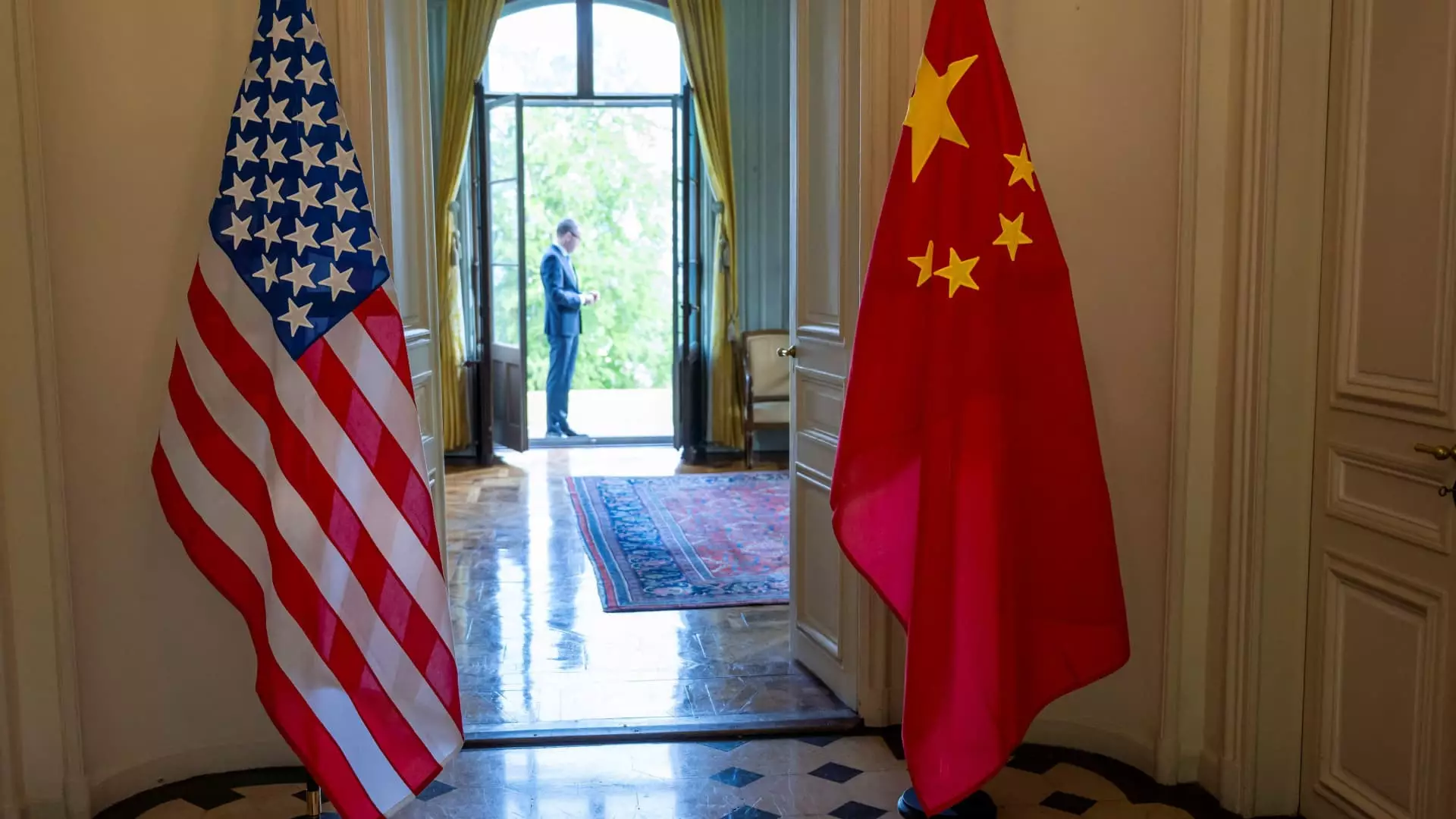The ongoing trade talks between the United States and China illustrate the complexities and pitfalls that characterize international diplomacy today. As reported, Treasury Secretary Scott Bessent conveyed a rather grim picture of the negotiations, indicating that they are “a bit stalled.” This assessment presents a stark reminder that despite the interconnectedness of global economies, a gulf of misunderstanding and mistrust can quickly undermine progress. The urgency for the two superpowers to engage directly is palpable, yet it begs the question: can any substantial compromise occur in an environment fraught with long-standing grievances?
Bessent’s remarks point to a need for direct communication between President Trump and President Xi Jinping; both leaders must navigate a landscape punctuated by escalating tariffs and geo-economic rivalry. The urgency is heightened by the rapid deterioration of relations—the two countries have more often been adversaries than allies in recent months. The call for a summit, although it may yield positive sentiment, runs the risk of being overshadowed by the stringent conditions set by both parties. The balance of power here is clearly tilting toward mutual assurance rather than genuine collaboration.
The Fragile Framework of Compromise
While reaching a breakthrough agreement seems like an achievement in the intricate dance of diplomacy, the details betray a more alarming undercurrent. The temporary rollback of recently imposed tariffs for 90 days gives both parties breathing room, yet it lacks a long-term solution to the underlying disputes. Numerous analysts assert that such arrangements are merely band-aids on deeper wounds. The limitation of this agreement becomes glaring when one considers that substantial technological tensions persist, with the U.S. still pushing forward with tech restrictions on China, affecting industries vital to its growth.
China’s retort to these measures—its unwillingness to significantly ease restrictions on rare earths—further complicates the dialogue. Rather than moving toward a resolution, the stalemate threatens to entrench economic segmentation that would have severe implications for global trade. The genuine concern here is the increasing likelihood that temporary solutions will solidify into permanent divisions between these two titans of industry. The notion that both countries need to “weigh in with each other” seems almost naïve when the stakes are so high and the political rhetoric so incendiary.
Looming Consequences of Miscommunication
Miscommunication remains a primary obstacle in U.S.-China relations. Analysts note that while Trump expresses a desire for direct dialogue, it is critical for both parties to approach this engagement with clarity and precision. China is tactically waiting, perhaps anticipating a dialogue that does not flank them with unexpected moves from the U.S. This cautious stance underscores a broader anxiety: should either leader make a misstep during negotiations, the ramifications could resonate far beyond their borders. Such a miscalculation could plunge the global economy into tumult, and the scars of this drawn-out conflict could linger for decades.
Additionally, the announcement of visa revocations for Chinese students by the U.S. government adds another layer of tension to an already fraught situation. The assertion by China that this decision is “fully unjustified” reflects an acute sense of betrayal felt among its citizenry. Global education exchanges and collaborations reliant on liberal policies are crucial for fostering understanding. The fissuring of these academic ties further compounds the existing economic discord, creating a breeding ground for animosity that could spill over into broader geopolitical realms.
The Road Ahead: Shifting Alliances and Ideological Battles
As we stand on the precipice of these negotiations, one must ponder the overall trajectory of U.S.-China relations. Is the path toward reconciliation paved with the stark realities of economic interdependence, or are we witnessing the dawn of a new Cold War? The tension feels like an ideological battle, where each nation seeks dominance while simultaneously grappling with the reality that both economies rely on mutual cooperation. In an era where climate change and global health require collaborative solutions, the self-imposed isolationism echoed through trade wars may ultimately serve to weaken both cultures.
In the end, the intricate web of U.S.-China relations will require not only political acumen but also the willingness to engage in the hard conversations often shunned in favor of soundbites and posturing. The gravity of the stakes involved in this economic chess game cannot be understated. As events unfold, the international community observes with bated breath, wondering whether these two powerful adversaries can find common ground, or whether they will continue down the path of arduous contention—risking not only their futures but that of the globe as well.

